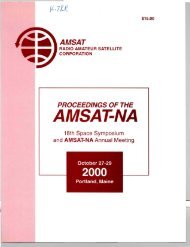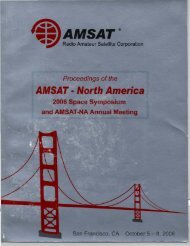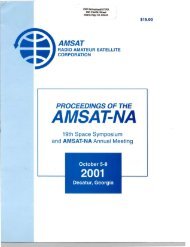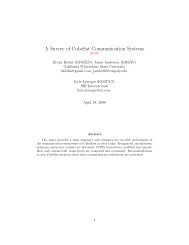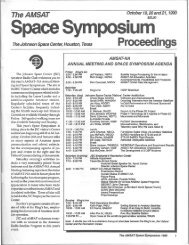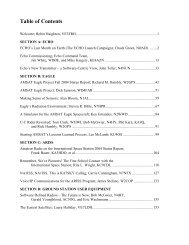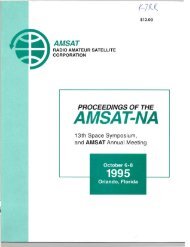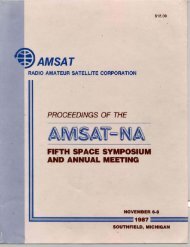November 8-10, 1991 - Klofas.com
November 8-10, 1991 - Klofas.com
November 8-10, 1991 - Klofas.com
You also want an ePaper? Increase the reach of your titles
YUMPU automatically turns print PDFs into web optimized ePapers that Google loves.
normal. A more <strong>com</strong>plete discussion of the data analysis phase<br />
can be found in [11.<br />
COMPONENTS OF THE MODEL<br />
The statistics given in Table 3 have been incorporated into<br />
the simulation model. Particular attention has been given to<br />
parameters associated with file server system operations, since<br />
the file server is the primary <strong>com</strong>munications resource. The<br />
arrival rates for successful and unsuccessful file server<br />
connections, file server transaction service times, byte counts<br />
per connection, and data-link layer response times have all been<br />
included in the model with distributions based on those determined<br />
from the analysis phase.<br />
The model should be considered valid only for the case of<br />
directional, <strong>com</strong>puter-pointed downlink antenna systems. For the<br />
directional antenna case, there is usually enough Eb/NO margin to<br />
counteract intermittent periods of fading. Even though the model<br />
does not include the effects of the link margin on BER, it does<br />
perform link margin <strong>com</strong>putations and displays the effect of the<br />
satellite slant range at the simulated clock time. The simulator<br />
user has the option of having the link margin <strong>com</strong>putations based<br />
on the use of either a directional or omni-directional downlink<br />
antenna.<br />
Spacecraft telemetry of some type must be broadcast<br />
periodically on the downlink, therefore the simulation allows a<br />
list of frame types, frame lengths, and transmission intervals to<br />
be specified by the user. This <strong>com</strong>ponent of the model is useful<br />
because there may be times when a higher-than-usual telemetry<br />
transmission rate must be used. It would then be desirable to<br />
know the effect of the higher rate on other downlink traffic.<br />
For example, how much file broadcast traffic would be preempted<br />
by the higher telemetry rate?<br />
The highest priority is given to file server transaction<br />
processing during execution of the simulation program. Telemetry<br />
traffic has the next highest priority and file broadcasting has<br />
the lowest priority.<br />
The simulation clock and other program variables are<br />
assigned values from an orbital prediction data base file<br />
maintained separately. This particular approach has been used<br />
for two reasons: (1) Since part of the model validation process<br />
requires checking on how well the model predicts the past, it is<br />
convenient to make simulation runs for exactly the same orbits as<br />
found in the system measurement data; and (2) If the simulator<br />
were to be run to model some yet-to-be-Iaunched satellite system<br />
it would still be possible to generate prediction "history" based<br />
on pre-launch orbital elements supplied by the launching<br />
authority.<br />
14



